The Ultimate Dog Ear Wax Color Chart: How to Keep Your Pup’s Ears Healthy

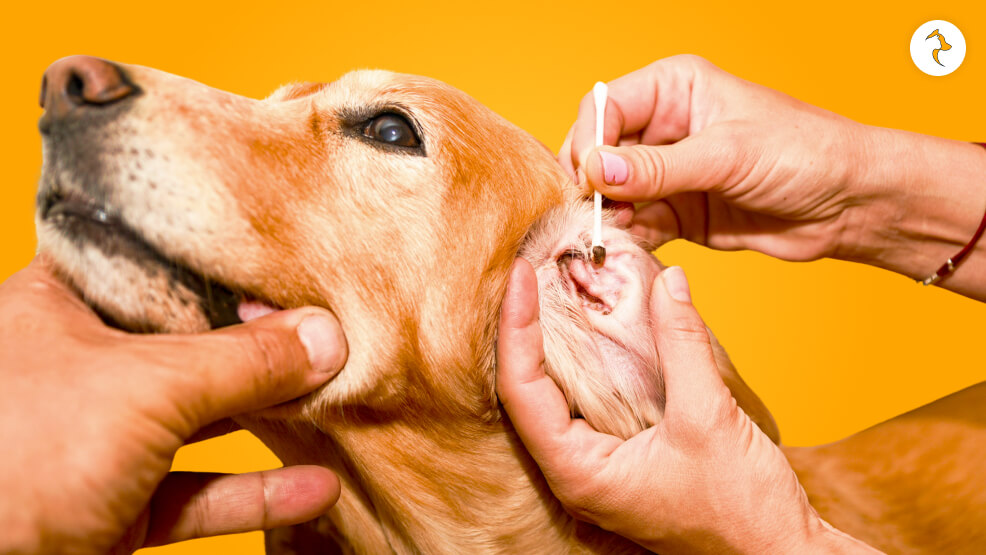
If you groom your dog yourself, then there are a few things that you should know about. The most important place to clean is the inside of the ears, which most people forget.
But that shouldn’t be the case, as a proper clean, and healthy eardrum is important for your dog to have a clear hearing.
This is why it is very important to clean the dog ear wax from their ears. However, there might be a lot of different reasons why ear wax collects inside your dog’s ears.
These reasons and the ear wax colors are all collectively given in a table called the dog ear wax color chart. To look at this color chart, you need to scroll down the article and read through it.
What Is Ear Wax?
Cerumen, or what we call ear wax, is an organic substance that forms on the external area of your dog’s ear canal. It is an oily material that is secreted by the ear glands of your dog.
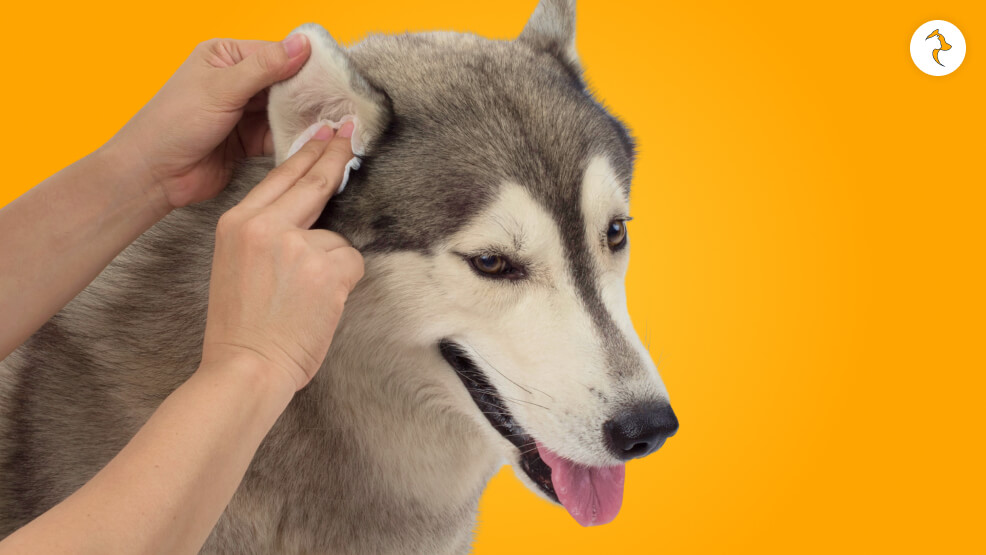
The substance gets produced to protect the ear from external things like dead cells, debris, bacteria, dust, and other substance.
But since the ear wax is an oily substance, it is water repellent, but it doesn’t even allow any kind of moisture to reach the eardrum.
Do Dogs Have Ear Wax?
Yes, all dogs have ear wax which is also called cerumen. This oily substance is made with discarded gland secretions and skin cells. Cerumen is visible on the exterior part of a dog’s ear canal.
Dog cerumen might look unappealing, but in reality, it serves a vital purpose. The ear wax traps dead skin cells, pollen, and debris, which get carried out of the dog’s ear along with the wax.
If this function didn’t exist, then excessive wax could accumulate inside a dog’s ear and end up causing some kind of a blockage which in turn could lead to infections.
Since ear wax is exceptionally oily, it can repel water – this actually prevents excessive moisture from entering a dog’s ear canal. Plus, ear wax also has certain properties that can even control fungi and bacteria growth.
Dog Earwax Color Chart:
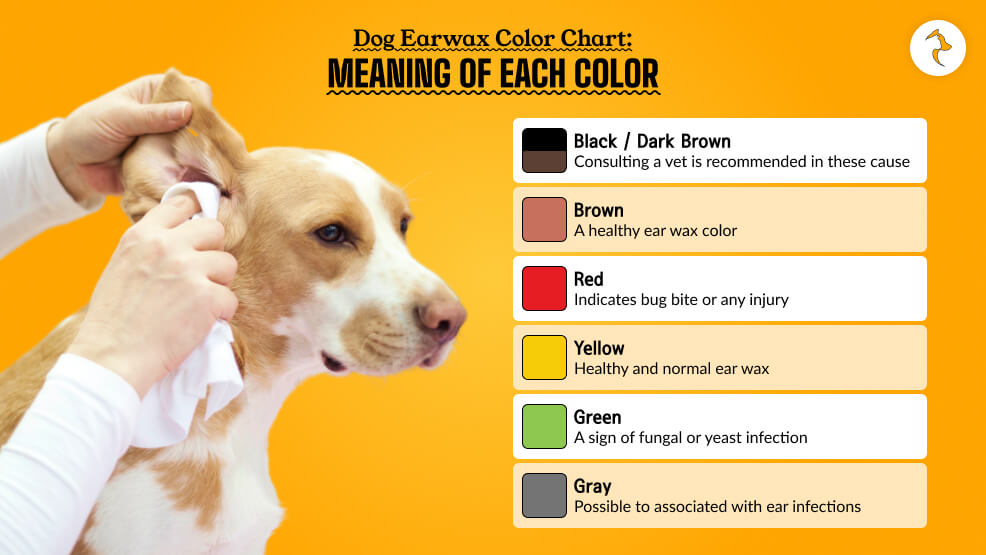
Earwax in a dog can easily be distinguished into different colors in the form of a dog ear wax color chart. Here is the dog ear wax chart that is quite important to identify the type of ear wax.
| Color | Possible Indication |
| Black / Dark Brown | ■ Some kind of yeast-related infection ■ Consulting a vet is recommended in these cases. |
| Brown | ■ Inflammation and odor is an indicator of infection. ■ Consulting a vet is recommended in these cases. ■ A healthy ear wax color ranges from yellow to brown to even black. |
| Red | ■ A bloody red ear wax indicates a bug bite or any injury. ■ Possible Pruritus presence is also a possibility. ■ Consulting a vet is recommended in these cases. |
| Yellow | ■ Healthy and normal ear wax ranges from yellow to brown and even black. ■ The outer ear pinna looks pinkish. ■ The odor is neutral in smell. ■ It could be associated with an ear infection. |
| Green | ■ A foul smell with green color is a sign of a fungal or yeast infection. ■ Consulting a vet is important in these situations |
| Gray | ■ It can be an indication of dirt. ■ Possibly to be associated with ear infections. |
| No Discharge | ■ Pruritus of pinna (outer ear), inflammation indicates allergies ■ No possible infection. |
1. Clear or Light-Yellow Earwax
This simply means the ears of your pet are clean, dry and clean. It is normal in that regard-the amount and color of the wax is absolutely normal as well. It only puts a protective layer on it so moisture will not escape.
- Why It’s Good: This color means that your dog’s ears are functioning properly. If the wax is soft, there is no inflammation, no excessive buildup, and no signs of infection. Clear or light yellow earwax does not require any intervention unless it becomes excessive or accumulates too quickly.
- What to Do: Keep cleaning regularly to maintain the balance of a healthy status. In general, it would be enough to clean once a month; however, it would depend upon your dog’s breed and lifestyle.
2. Dark Yellow or Amber Earwax
Dark yellow or amber earwax may be a sign the earwax is simply old and will probably simply exit the ear canal, exiting the ear naturally. The color falls within what’s considered the normal color, and does not in any way point to diseases.
- Why It’s Good: This creates an impression that the body of the dog is working to clean the ears by pushing the wax outwards. However, if it’s very thick or there is a lot of wax, it may imply that there is minor irritation or allergy.
- What to Do: Check your dog’s ears and see if wax continues to accumulate. If it starts accumulating to some degree, or if it seems to be accompanied by itchiness, redness, or smelliness, take your dog to the vet.
3. Brown or Light Brown Earwax
Brown earwax may be normal, part of build-up, but it might also signal that there’s irritation in the ears, either due to allergy or even a minor infection. It’s not always something wrong with it unless accompanied by redness, odor, and discharge.
- Why It Matters: Brownish wax is an indicator of old or dried earwax that has passed sometime in the ear canal. If it is crumbly and dry, it can be an indicator of dehydration or slight imbalance with the natural moisture levels within the ear.
- What to Do: Clean your dog’s ears using a mild ear cleaner to avoid further accumulation. If this brown wax is accompanied with other disturbing signs, for example, constant scratching or shaking of the head and discomfort, then take them to the vet.
4. Black Earwax
Black earwax, especially when it is accompanied by an offensive odor, may indicate a problem. It can represent an infection caused by a yeast or bacteria or even some serious medical condition. Black earwax is typically thick and sticky in many cases, which may represent an infection or the existence of ear mites.
- Why It’s Worrying: If the wax is black or dark, and it has a stench or smell, it should not be overlooked. It could be an indication of serious infections in the ear, fungi, or a parasite infection such as ear mites that needs attention right away.
- What to Do: If you see black earwax, then seek the attention of a vet immediately. Your vet can then give you a prescribed ear cleaning schedule, medication, or treatment for the infection or condition causing the discoloration.
5. Green or Yellow-Green Earwax
Usually, should the wax of the ears be green or yellowish-green, then it is a definite infection. The coloration usually seems to be due to pus that the dog usually forms in case of a bacterial infection of the ear. Swelling, pain, redness and an odor may be added to the discolored wax in the infected ear canal.
- Why It’s a Problem: It usually represents the symptoms of ear infection on the move, often accompanied by irritation, itching, and head shaking. In fact, the greenish tint is created by white blood cells in combination with a collection of bacteria that tends to form in the ear canal.
- What to Do: If your dog’s earwax is green, a visit to the vet is necessary. Your vet may need to diagnose the cause of the infection and prescribe antibiotics, antifungal treatments, or ear drops to help clear up the issue. It’s crucial not to ignore a greenish hue, as untreated ear infections can worsen and lead to hearing loss or other complications.
6. Red or Blood-Stained Earwax
Earwax with the appearance of being red or stained with blood indicates that your ear canal is suffering from some trauma, injury, or inflammation. It might be a result of heavy scratching, ear mites, or even a punctured eardrum.
- Why It’s a problem: This is not normal earwax and should be considered a medical emergency. If there is blood, the earwax has possibilities of an infection or other deeper reasons, which should be handled immediately.
- What To Do: Call your veterinarian immediately. Blood-stained earwax may indicate that there is a ruptured eardrum, trauma, or very bad infection that needs proper care by a professional.
7. Smelly or Foul-Smelling Earwax
Meaning A foul odor from an ear, with abnormal wax usually, is indicative of a fungal or bacterial infection. Yeast infections are rather well known to cause such a characteristic musty odour. It is primarily associated with long-eared breeds, allergies, and excessive moisture in the canal.
- Why It’s Serious: An infection is usually indicated by the presence of a foul odor with abnormal ear wax. This should be treated promptly so that things do not get worse and cause the patient pain or worsening hearing.
- What to Do: Take your pet to your veterinarian so that your veterinarian may diagnose appropriately. Your veterinarian can clean your dog’s ears, thereby administering appropriate prescription treatment to treat a current infection or prevent re-infection.
Ear Cleaning Steps:
Cleaning the insides of a dog’s ear is not as simple as you might think; there is a particular process to it that you need to follow.
| 1. | Prepare balls of cotton. |
| 2. | Fill the ear canal of your dog with the cleaner, then massage the ear base gently to spread the solution around evenly. |
| 3. | Let your dog shake their head vigorously to remove the cleaner from their ear. |
| 4. | With the cotton balls clean the waxy debris from their ear. |
| 5. | Again repeat stages 2,3, and 4 multiple times till no waxy debris comes out on the cotton balls. |
If you clean and groom your dog by yourself and not by any professional, then you might forget to clean your dog’s ears. But it is very important to clean your dog’s ears from any injury or infection.
Here given below are the steps on how you should properly check the insides of your dog’s ears by yourself.
- It is a good thing that you don’t need any expensive tools to clean your dog’s ears. Rather, you will only need clean cotton balls, a roll of gauze, and your vet-approved ear cleaner.
Make sure a vet-approved cleaner; other solutions might infect your dog’s ears, like chemical burns. You should only use cotton balls and not cotton swabs, as they can damage the eardrums and ear canals if pushed further in.
- Place and hold your dog in front of you and squeeze the ear cleaner inside its ear for about 30 seconds. Then start massaging the base of their ear to let the solution spread.
To avoid any contamination, you should not let the tip of the bottle touch the inside of your dog’s ears.
- Let your dog shake their head vigorously in an attempt to remove all the solution from its ear. Once the ear wax becomes loose, wipe it out with the cotton balls.
- Clean the wax debris from the outer ear.
- Now repeat steps 2,3 and 4 multiple times till you find no wax debris on the cotton balls.
- Lastly, give your dog a treat for their cooperation.
What Causes Excessive Earwax In Dogs?
If you are wondering why your dog has ear wax, well, in that case, there are many reasons why ear wax is collecting in your dog’s ears. Following are a few reasons why dog ear wax happens; match the colors with the dog ear wax color chart.
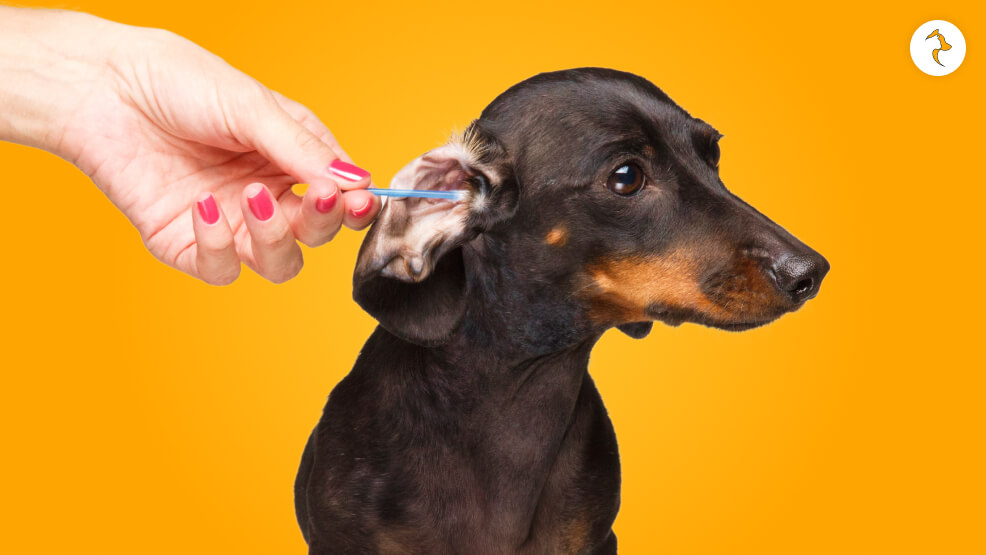
1. Allergies & Hay Fever
Allergies are the most common reason why dog ear wax collects inside your dog’s ears. Bacterial infection build up along the ear canal causes irritation and inflammation.
But it is also possible that your dog is suffering from hay fever; you can notice this if your dog scratches their ear excessively. In such a case, you should immediately consult your vet.
2. Infection
The reason for the dog ear wax can be simply because of infection since some dogs get affected with an ear infection more than other dogs. If your dog is prone to such ear infections, then it is better to have them all checked out by the vet properly.
3. Ear Mites
Ear mites are infectious parasites that spread easily from one dog to another. These bugs or mites cause inflammation and pain when they bite. They leave brown and black colored dog ear wax along with red marks.
Wrapping Up!
Now that you know why it is important to memorize the dog ear wax color chart and know which color does what and the reason. If you think this article was informative for you, then don’t forget to give this article a like and also comment down below.
More on The Pets Magazine:







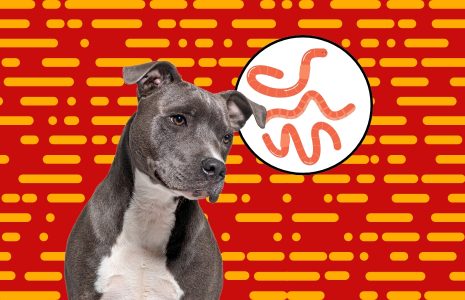
Leave A Comment